Covid-19 in Wales: Five key figures to keep an eye on
- Published
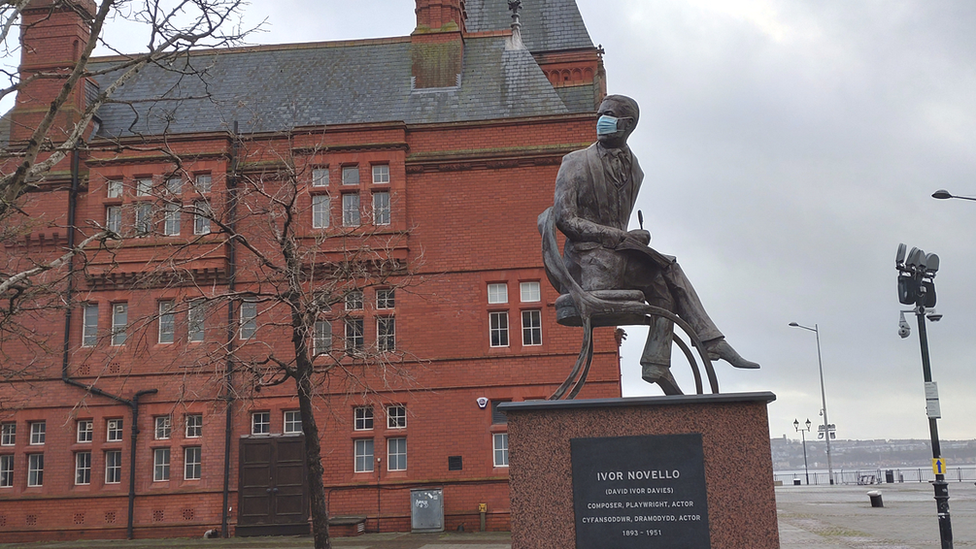
Cardiff Bay and the Ivor Novello statue
Nearly two years after it began, there is hope the worst of the Covid pandemic is behind us - so what should we be looking out for?
Case numbers seem to be falling quickly, but are they all they seem?
Within some of the key indicators, there are a few complications to navigate.
Here are five sets of figures we need to keep a close eye on, over the days to come.
1. Hospital figures
Hospital figures have been the key metric for some time - not just as a measure of how many people need treatment for Covid but also the impact this has on the health service, having to deal with normal winter pressures and also deal with a waiting list backlog made worse by the pandemic.
Hospitalisations and admissions involving Covid are considerably lower this winter than this time last year but the First Minister Mark Drakeford said NHS Wales was still facing "very challenging circumstances".
Bed occupancy for all conditions in acute beds is back above 90% - its highest rate on record; staff absences are also high.

But latest figures show Covid patients in critical care or on ventilation were at their lowest daily level for five months.
Admissions are slightly down, while numbers of patients with confirmed Covid has also fallen for six straight days.
There were 717 patients with confirmed Covid in hospital on Monday, 20% down on the week before.
But understanding this is complicated by internal NHS Wales figures for Monday which showed that only about 47% of people in hospital with coronavirus were there because of the virus; about 53% were there for some other illness and just happened to be positive for Covid.
These cases of "incidental" Covid still bring challenges - sometimes complications for the patient's health but also a headache for the hospitals looking after patients come in with a Covid infection - or in 250 cases in the last week, caught it while in hospital.
Mr Drakeford said the health service worked hard to stop the virus spreading inside hospitals "but once it's in there, it's every bit as keen to spread as it would be in any other setting".
The Welsh Government hopes to be able to publish data on "incidental" Covid patients soon and said health boards have been asked to start collecting data.
"This work is at an early stage and we're working to understand the coverage and quality of the data before publishing. We will publish these figures as soon as these checks are complete," said a spokesman.
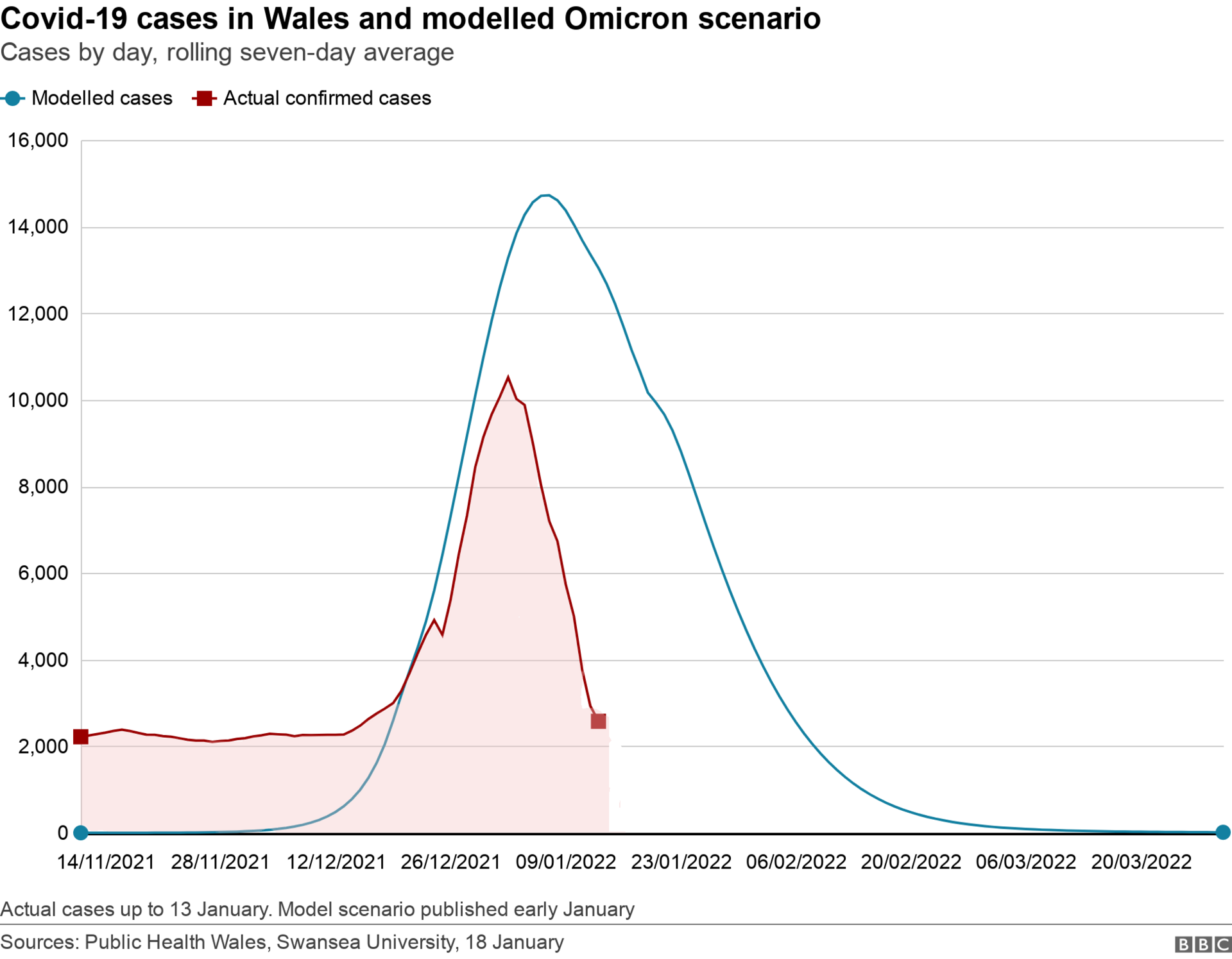
2. Are the case rates really falling now?
Omicron threw a spanner in the works before Christmas, with a highly transmissable variant of Covid spreading quickly, just as the booster vaccination programme was ramping up.
Case rates hit record levels. The highest proportion of those affected were those aged 20 to 40.
There were so many people requesting PCR tests, whose results feed into the case figures we see from Public Health Wales, that the criteria for who should take them was changed.
Those with symptoms are prioritised and still told to take a PCR test.
But if you take a lateral flow test for work, school or to go to an event, since 6 January, if you test positive you won't have to take a follow-up PCR test. This means that in the most recent week, when there were a record 15,312 positive lateral flow tests, results from most of those people will not show up in the usual case rate figures.
Health officials estimate at least 10% of case results we were used to seeing will no longer feature in the figures.
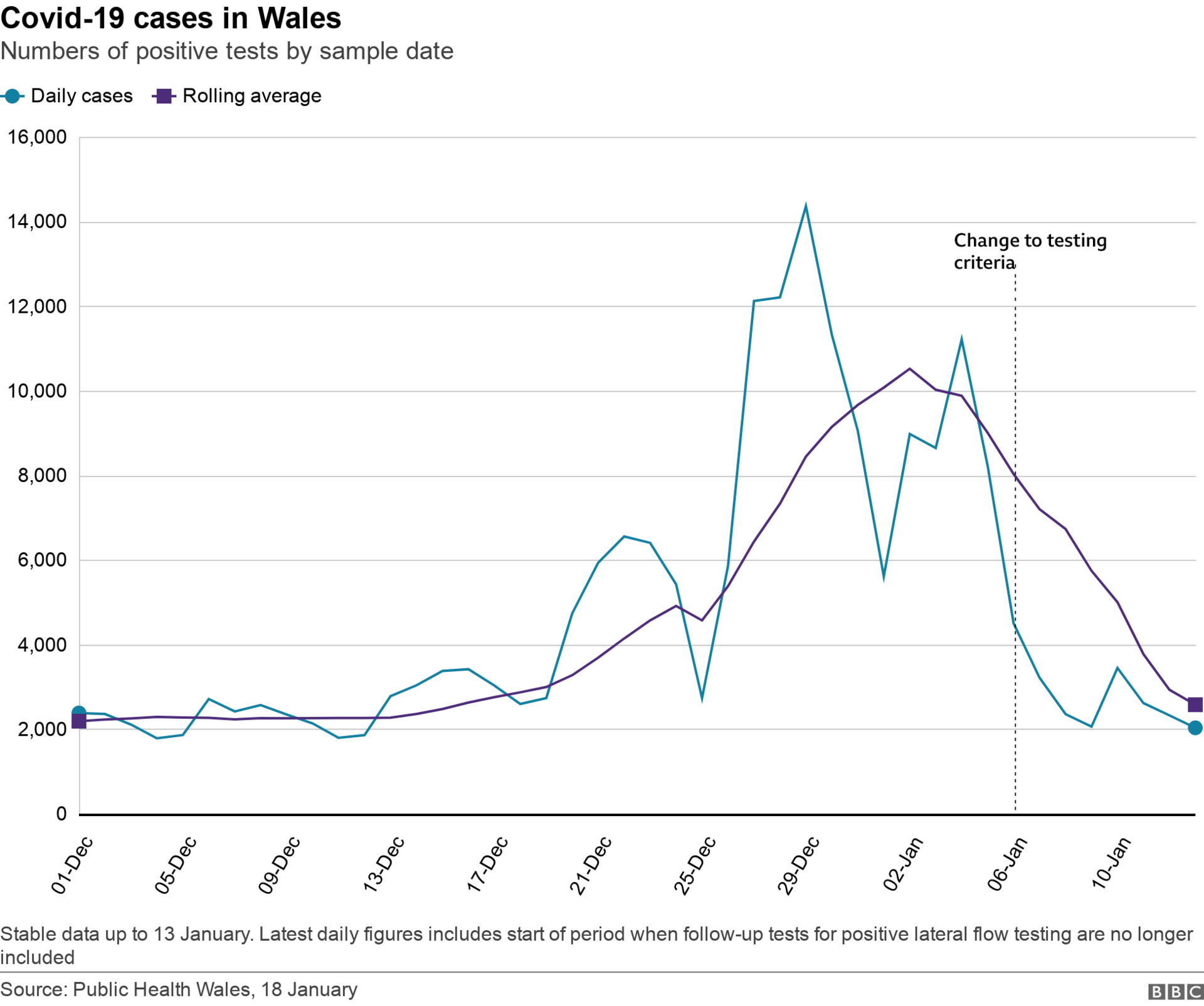
We've seen a big fall in the case rate in recent days.
In the week since the policy changed though, the case rate has still fallen by a further 68%.
This latest drop in case numbers can't be explained by the changes in testing. Fewer people are getting tested because there seems to be less infection around.
Omicron has been difficult to predict and scientific modelling has changed since before Christmas but even the "most likely" scenario published in early January now looks pessimistic, with cases falling faster and deeper than expected.
3. What does the infection survey tell us?
Since the summer of 2020, the Office of National Statistics has been taking swab samples at random every week from thousands of people in Wales.
Using the test results, it estimates how many people have Covid.
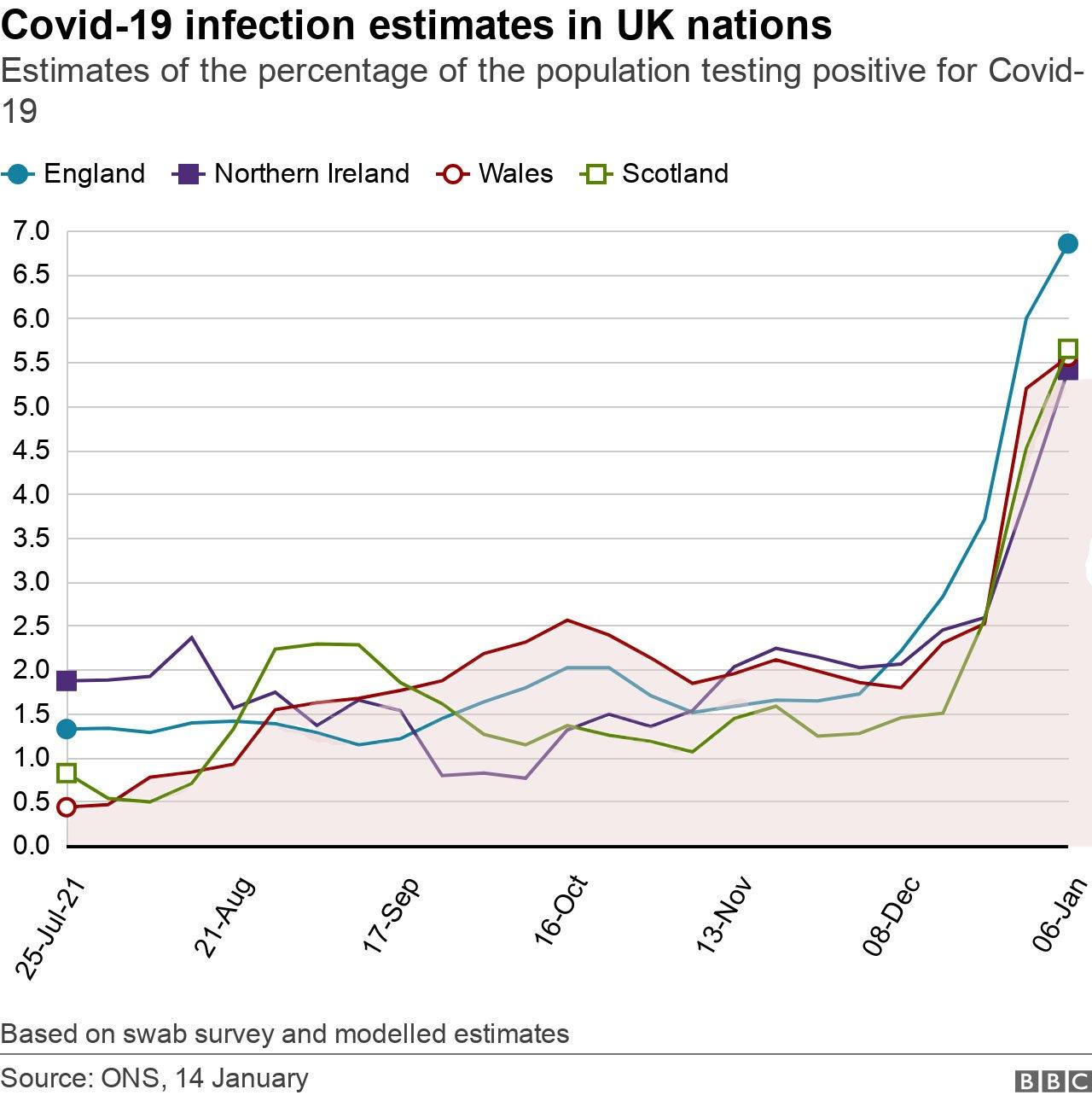
Based on swab samples of more than 7,260 people - it estimated that one in 20 people in Wales had Covid in the week ending 6 January.
That is 169,100 people, or 5.56% of the population.
Now there's a bit of a time delay in getting the results back - but ONS have brought forward the headline results by two days.
Health officials in Wales estimate testing may only pick up around half of people who actually have Covid at any given time.
With the complications over case rates, this survey is a useful tool and will pick up people who don't realise they have Covid.

4. How many people are dying from Covid?
Sadly, people are still dying from Covid, although not in the numbers we saw last winter or during the first wave of the pandemic.
The most reliable source of figures about Covid deaths is the ONS.
Public Health Wales has been giving a daily report of deaths since the pandemic began, aimed at giving a "real time" snapshot of what was happening. But it's limited. The only deaths it counts are those when the deceased tested positive within 28 days. This mainly involved deaths in hospital and some in care homes. It doesn't include hundreds of deaths in people's own homes, in hospices and many deaths early in the pandemic when people died without tests.
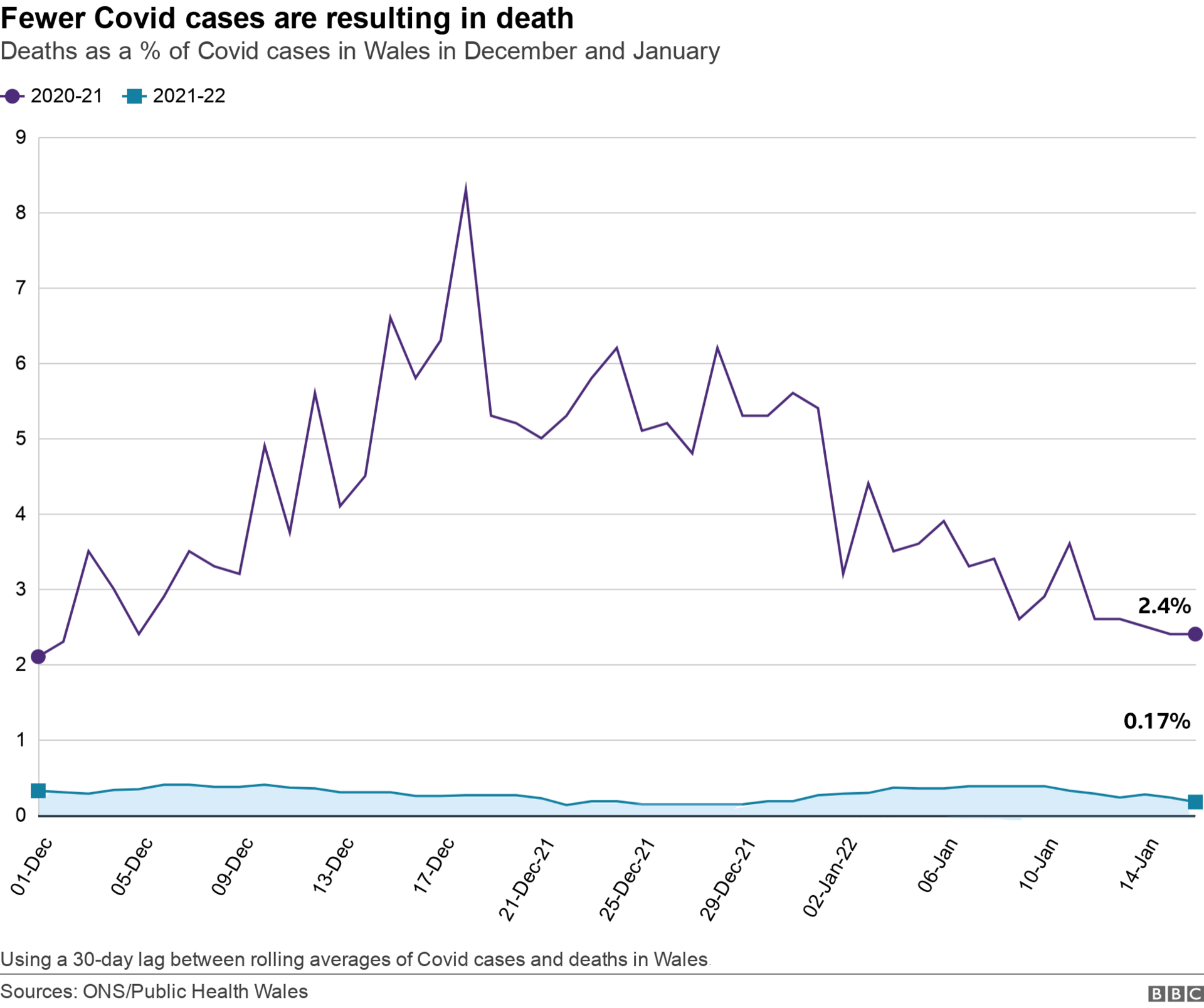
This measure is also complicated because we know there are people who may die of other conditions but also tested positive for Covid.
The latest weekly total was 61 deaths but the daily average was 10 times at the same point last winter.
What is certain is that compared to last winter, despite the record numbers of Covid cases in the community this time round, far fewer people are dying.
5. How is the booster programme going?
We need to keep an eye on vaccinations, particularly the booster programme.
Wales reached 82% of those eligible for a booster, second only to Scotland in the UK and the fourth highest proportion in the world.
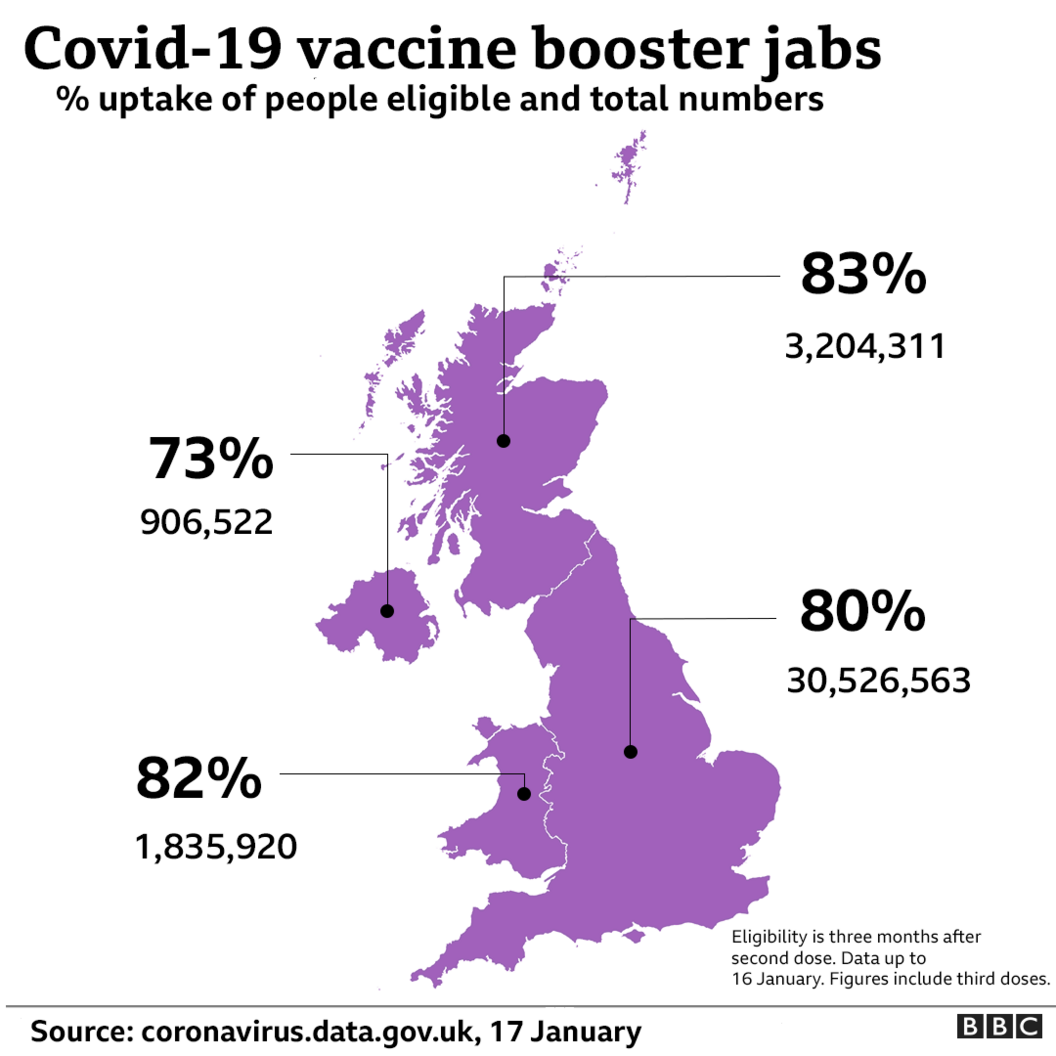
Numbers of daily vaccines have now dropped off considerably, to an average under 6,900 a day in the last week; this is partly due to the success of the surge in uptake before Christmas and also that the current target group, the 18 to 40 age group, include people having to wait for their jab due to Covid infection.
What the ONS infection survey also offers us is an estimate of how many people - thanks to the vaccine but also the immunity following Covid infection - have antibodies.
That has reached 96.8% of adults in Wales. The scientists will now be looking at is how many of us will have higher levels of protection and whether that wanes over time.
- Published28 May 2024

- Published14 January 2022

- Published14 January 2022
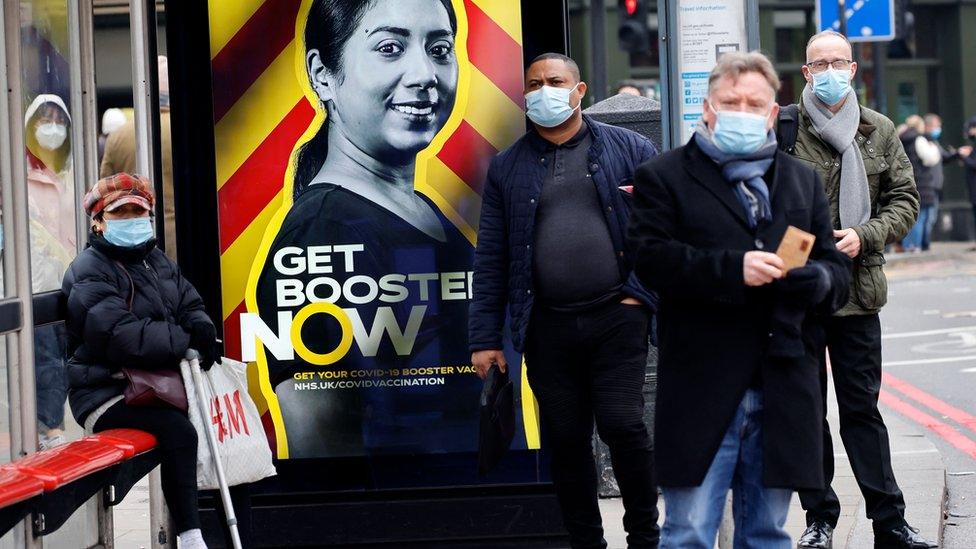
- Published4 January 2022